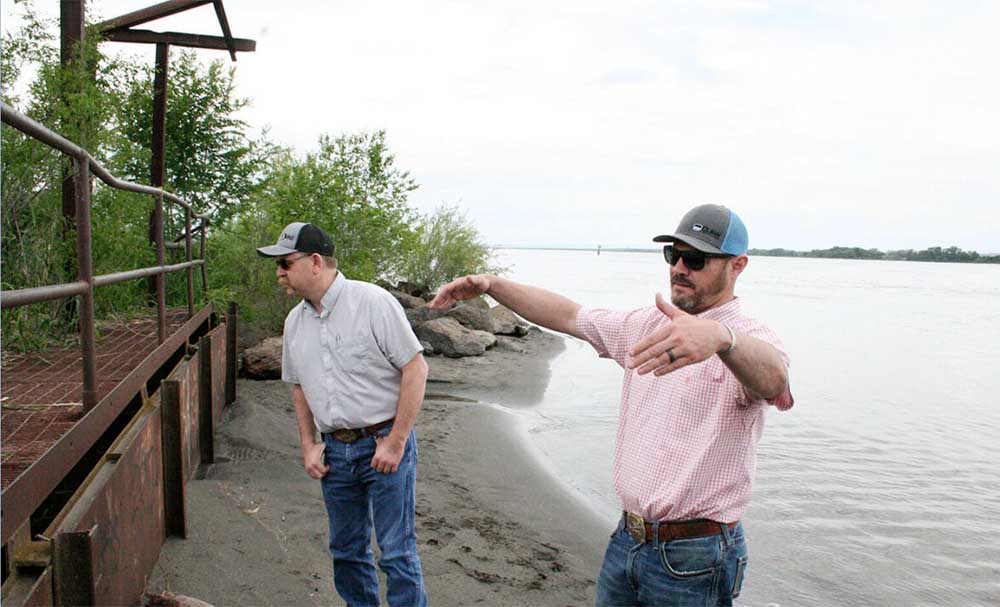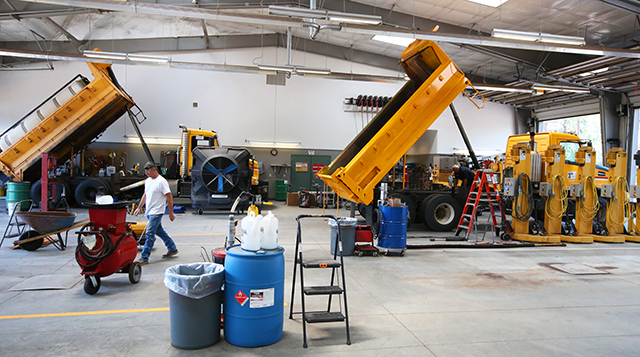Oregon farm groups wary of Umatilla groundwater nitrate pollution plan
Published 9:15 am Tuesday, September 24, 2024

- JR Cook, right, founder and director of the Northeast Oregon Water Association, and Gibb Evans, vice president of IRZ Engineering & Consulting, believe Oregon’s Department of Environmental Quality is too inflexible in regulating industrial water reuse in agriculture.
Fertilizer and irrigation practices will be scrutinized more closely in Oregon’s Lower Umatilla Basin under a new regulatory plan to decrease the region’s groundwater nitrate pollution.
However, farm organizations say they don’t see eye-to-eye with the state government regarding scientific data that will be critical for protecting and restoring the area’s aquifers.
Trending
Data baseline missing
“There’s nothing currently to base decisions around that is trusted,” said JR Cook, executive director of the Northeast Oregon Water Association, which represents irrigators in the region.
Without a trusted baseline of data about what’s causing the problem, and against which to measure success, the plan must rely on agency opinions in which farm groups lack confidence, he said.
“As a region, we don’t know if these regulations are going to tackle the issue of certain areas having high nitrates,” Cook said.
State will take lead
Several state agencies will carry out the nitrate reduction plan for the Lower Umatilla Groundwater Management Area, with the Oregon Department of Agriculture taking the lead on objectives related to nutrient leaching from fertilizers.
Trending
Over the next couple years, the agriculture department will develop benchmarks for nitrates in soil that will likely require testing farmland in the region, though the details have yet to be ironed out, said Isaak Stapleton, the agency’s natural resources program area director.
“I wouldn’t say it’s a departure from the agency’s work. It’s an enhancement of the work we’re doing,” he said.
Applications of nitrogen, as well as the water that allows it to travel through the soil, are expected to figure heavily in the overall strategy for reducing nitrates in the aquifer system, Stapleton said. The benchmarks for soil nitrogen are necessary to help farmers stay in regulatory compliance.
“How can people avoid speeding if they don’t know what the speed limit is?” he said. “We’re trying to provide levels to help growers make management decisions, not tell them what decisions to make.”
Specifics will be “fleshed out” as the department engages with the agriculture industry about the regulatory structure and exact thresholds in 2025, then begins implementing the plan in 2026, Stapleton said.
Timeline ‘very broad’
“That timeline is very broad, and that’s intentional, because it could go faster or slower,” he said.
Though the agency does not intend to create a new permit system for farmers applying conventional fertilizers, manure applications will require permits under legislation that precedes the plan’s announcement, Stapleton said.
Enforcement of the new regulatory approach will follow the same “pathway” as for existing agricultural quality rules, with the agriculture department initially focusing on outreach and education, then imposing sanctions if farmers don’t correct violations, he said.
“The goal is not to hit people over the head with an enforcement action. The goal is compliance,” Stapleton said.
Stapleton said he’s heard the criticisms about data gaps, but said the agencies “recognize these all need to be science-based decisions.”
The plan will rely on information that’s available to head off water pollution, which can’t be delayed until more research is performed, he said. “We can’t kick the can, and we must take action.”








